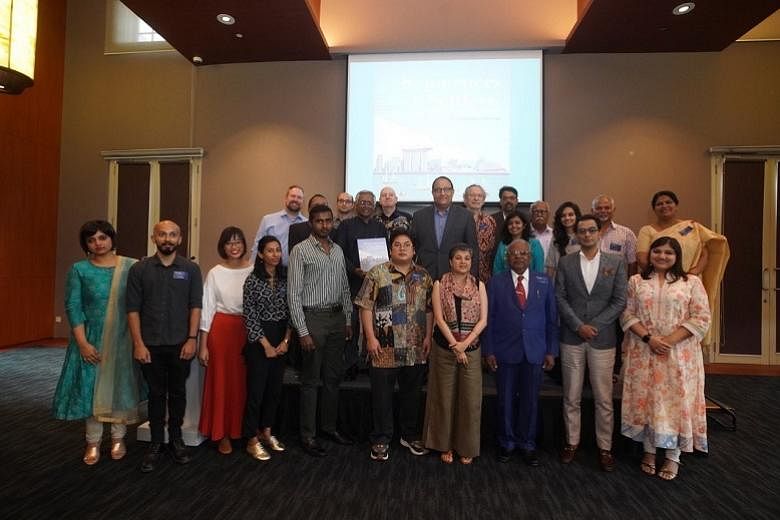A newly launched publication has traced the Tamil community's presence in Singapore and South-east Asia back 2,000 years.
The Indian Heritage Centre's (IHC) From Sojourners To Settlers - Tamils In South-east Asia And Singapore was launched yesterday by Minister for Communications and Information S. Iswaran at the Asian Civilisations Museum.
"Our early Tamil pioneers helped to shape the Singapore identity and laid the foundations of contemporary Tamil culture and practice," said Mr Iswaran.
He also cited an observation in the book, that the Tamil community "is clearly identifiable but not easily definable" and any attempt to do so is fraught with challenges.
Published by the heritage centre and the Institute of Policy Studies, the book explores lesser-known aspects of Tamil history and heritage in Singapore and South-east Asia, examining evidence of Tamil connections with the region.
These include the inscriptions on the Singapore Stone, which some experts date back to the 10th century.
It was located at the mouth of the Singapore River, before the British destroyed it with dynamite in 1843.
Researcher Iain Sinclair, a contributor to the book, recently identified the phrase "kesariva" in the inscriptions found on parts of the artefact, and said it could be part of the word "Parakesarivarman" - a title used by several Chola dynasty kings.
This suggests a Tamil presence in the Singapore Strait dating back 1,000 years.
The publication is the first between the IHC and an academic institution, and aims to better document history and heritage. Over two volumes, it features research of scholars from India, Singapore, South-east Asia, the US and Europe.
Topics discussed include trading ports and maritime routes connecting Indian kingdoms with South-east Asia and the literary similarities between Malay and Tamil.
Mr Iswaran addressed the efforts by early Tamil pioneers in shaping Singapore's identity and laying the foundations of contemporary Tamil culture and practice here.
"Colonial Singapore was a microcosm of India's diverse cultural background and landscape - its vast, seemingly endless range of sub-ethnicities and linguistic groups," he said.
Tamil Muslims set up Singapore's first vernacular press while Indian merchants and moneylenders, including the South Indian Chettiars, were the source of credit and banking before the advent of European banks in the 19th century, he added.
"Today, Tamil is one of our four official languages, and community and state-supported efforts to promote the Tamil language and culture continue with vigour.
"Tamil Singaporeans, who constitute a majority of the Indian population in our nation, are a vibrant and diverse community, who continue to play an important role in shaping Singapore's future," he said.
The book launch was held in conjunction with the IHC's latest special exhibition - From The Coromandel Coast To The Straits: Revisiting Our Tamil Heritage - which runs from Nov 23 to June 30 next year.
Admission is free for Singaporeans and permanent residents.


